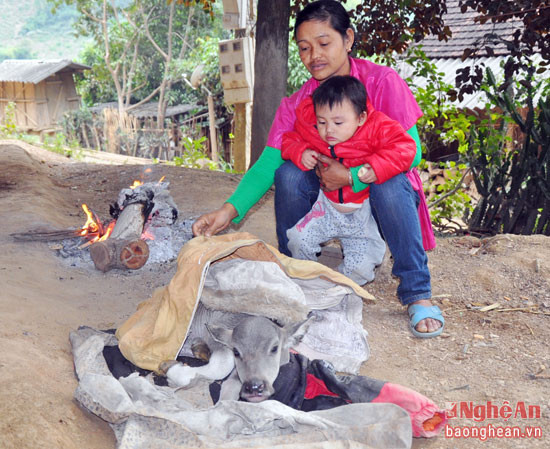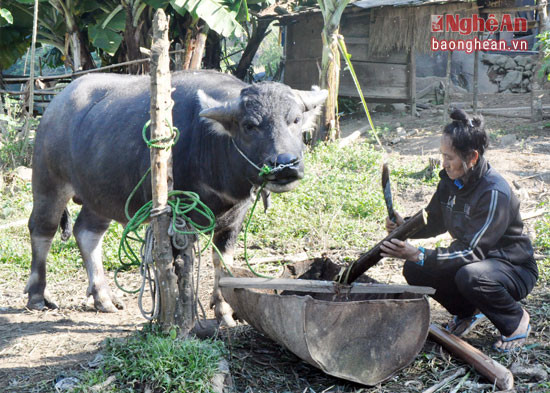Covering buffaloes and cows on cold days
(Baonghean.vn) - In recent days, temperatures in Nghe An have dropped, especially in the highlands. Preventing cold weather for livestock has become an urgent concern for people to limit serious damage.
 |
| People in Na village, Huu Lap commune (Ky Son) lit a fire and used sacks and old clothes to keep the newborn calf warm. Photo: Cong Kien |
Remember, the severe cold in early 2016 caused heavy damage to farmers in Nghe An, especially in mountainous and highland districts. Almost the entire winter of 2015, the weather was quite warm and pleasant, some people even said that winter was not as harsh as before. Suddenly, in the last days of January 2016, the temperature dropped, commonly at 5-7 degrees Celsius, in some places below 0 degrees Celsius.
In the highlands, many households that raise buffalo and cows in the form of free-range farming have not had time to go to the forest to gather and bring them back to cover and light fires to keep warm. The freezing weather has caused natural food sources to freeze, causing livestock and poultry to suffer both cold and hunger.
According to statistics, last year's severe cold spell killed 815 buffaloes and cows, 486 goats, 310 pigs and nearly 40,000 chickens. The mountainous districts such as Ky Son, Que Phong, Tuong Duong and Quy Chau suffered the most damage.
The severe cold spell in early 2016 and the ongoing cold spell in recent days have confirmed that the weather is becoming more complicated. Farmers are advised not to be complacent and to be prepared to promptly protect livestock and poultry from the cold and hunger when the weather changes suddenly.
 |
| People in Tham Tham village, Nhon Mai commune (Tuong Duong) use food reserves for buffalo and cows during cold days. Photo: Cong Kien |
In the long term, to preserve the number of livestock and poultry, people in mountainous and highland districts need to develop concentrated livestock farming instead of free-range farming. That means planning and building a system of barns, developing a rich food source, meeting daily needs and having reserves when necessary. For example, growing milkweed while collecting corn and dried straw to store for days of harsh weather.
Cong Kien
| RELATED NEWS |
|---|
